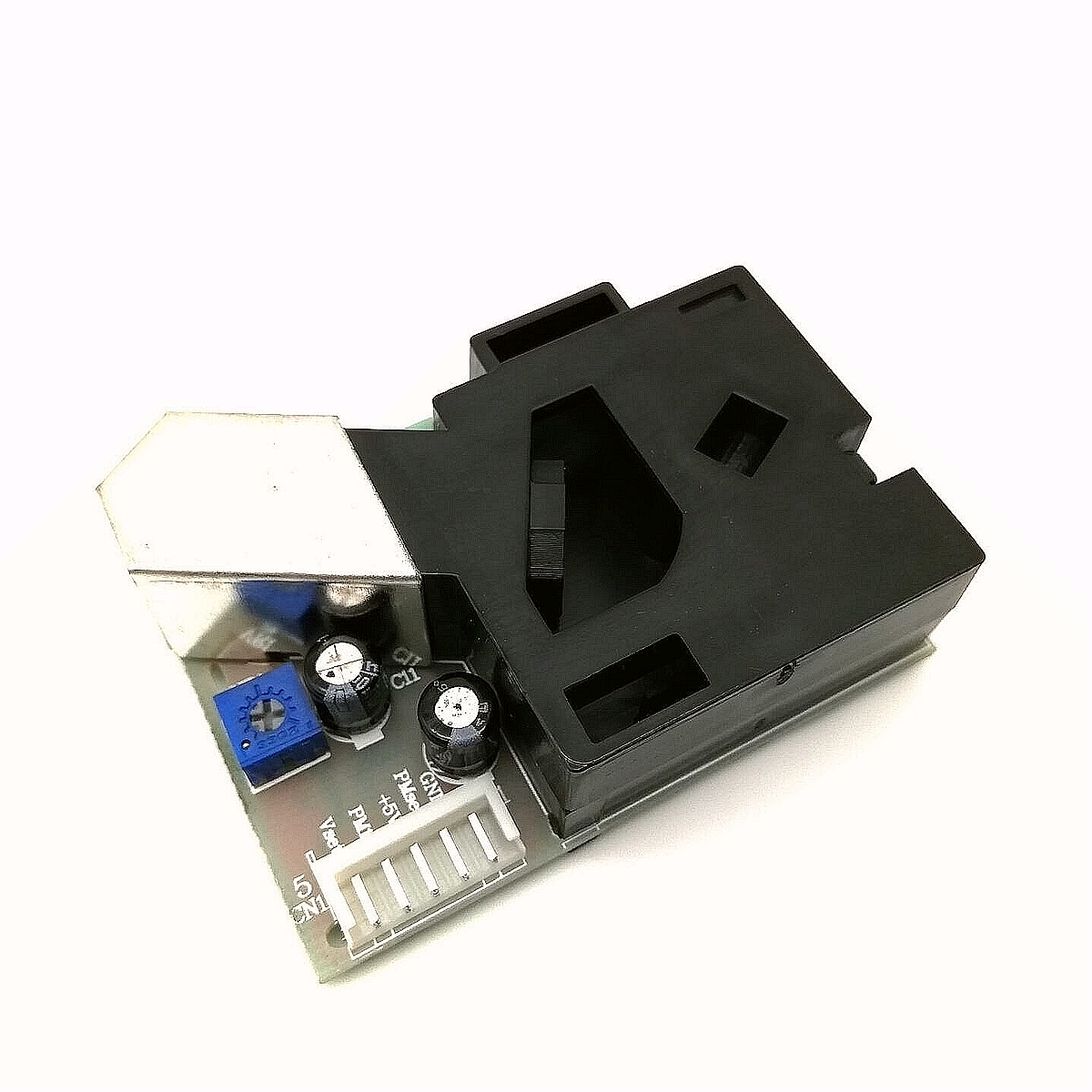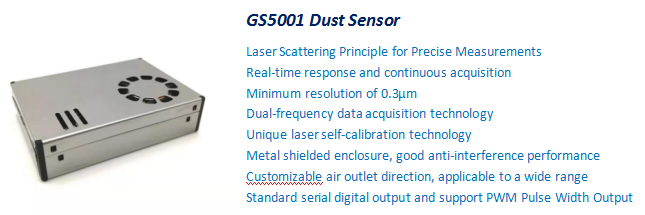News
About dust sensors
Dust sensors (also called PM2.5 sensors) are categorized into two main types: infrared dust sensors and laser dust sensors, both of which can be used to measure the value of airborne particulate matter concentration, what is the difference between them?

Structure of infrared principle of dust sensor is relatively simple. Its light source is infrared LED light source, according to the principle of light scattering, LEDs emit and reflect light if they meet dust, photosensitive sensor detects the light intensity of the reflected light; concentration of dust is determined by size of the pulse signal. If no dust is detected, the photosensitive detector outputs a low pulse; conversely, when dust is detected, a high pulse is output.

Unlike dust sensors based on the infrared principle, the laser dust sensor has a fan that generates a steady airflow circulation, it can quickly obtain a value for the current PM2.5 concentration in the environment as soon as it is activated.
The laser dust sensor has a more elaborate structure and circuitry compared to the Infrared Sensor because it uses a laser LED as the light source.When the fine particles in the air through the constant current fan driven into the area where the laser beam is located, the laser will be scattered, we place the photodetector in the appropriate location, so that it only receives scattered light, and then through the photoelectric effect of the photoelectric detector to generate electrical signals, amplified by the circuit processing, you can get the value of the concentration of fine particles.
Infrared dust sensors use infrared light source wavelength is long (about 700 ~ 900nm), the measurement accuracy is insufficientthe for aerodynamic diameter of particles smaller than above 1um. Because signal of the infrared LED light scattering particle is weak, only have a relatively obvious response to larger particles greater than 1um, and only with the heating resistor to promote the sampling airflow, the number of samples is small, the measurement accuracy of about ±30%.
The laser sensor can detect dust particles as small as 0.3um. Because it comes with a higher performance MCU, uses a constant speed fan to increase air intake and collects higher density data, the overall measurement accuracy can be ±10%. Therefore, compared to infrared dust sensor, the laser dust sensor has obvious advantages in the sensitivity, accuracy and consistency in the measurement accuracy.
Due to the lack of precision, the infrared principle sensor is mainly used for industrial and mining dust, the detection object is dust with large particle size and high concentration, and can not accurately measure the concentration of PM2.5.
Laser sensors are mainly used in the field of PM2.5 detection to quantify the quality of PM2.5 with precision, and can be embedded in household (car, handheld) air detectors and air purifiers. In addition, laser sensors are also used in the Internet of Things (IoT) data collection and environmental quality testing.
Related News
- Reliable Semiconductor gas sensor 2025-05-15
- About VOCs 2025-04-03
- Home Gas Leak Detection Solutions - Semi 2025-03-31
- CO monitoring in underground garages 2025-03-27
- Hazardous gas detection for tunnel safet 2025-03-21
Categories
Contact us
HJP Technology Co., Ltd
Contact:Angela Sun
Mobile:+86-18603812197
Email:[email protected]
Add:No.11 Zhengshang Road, Zhengzhou, 450007, China
 angela
angela